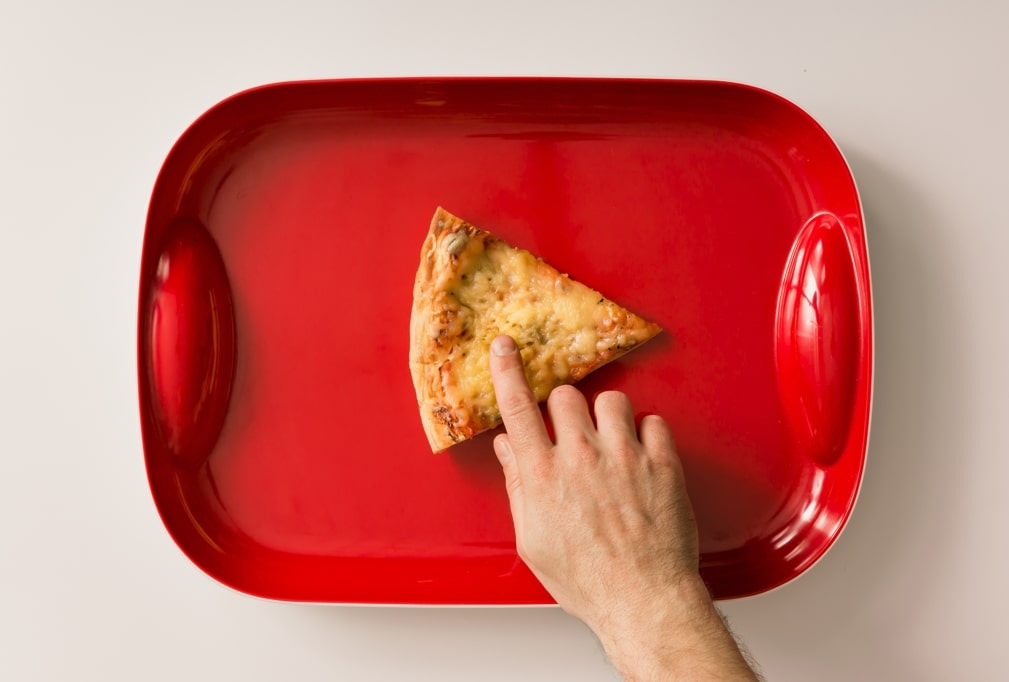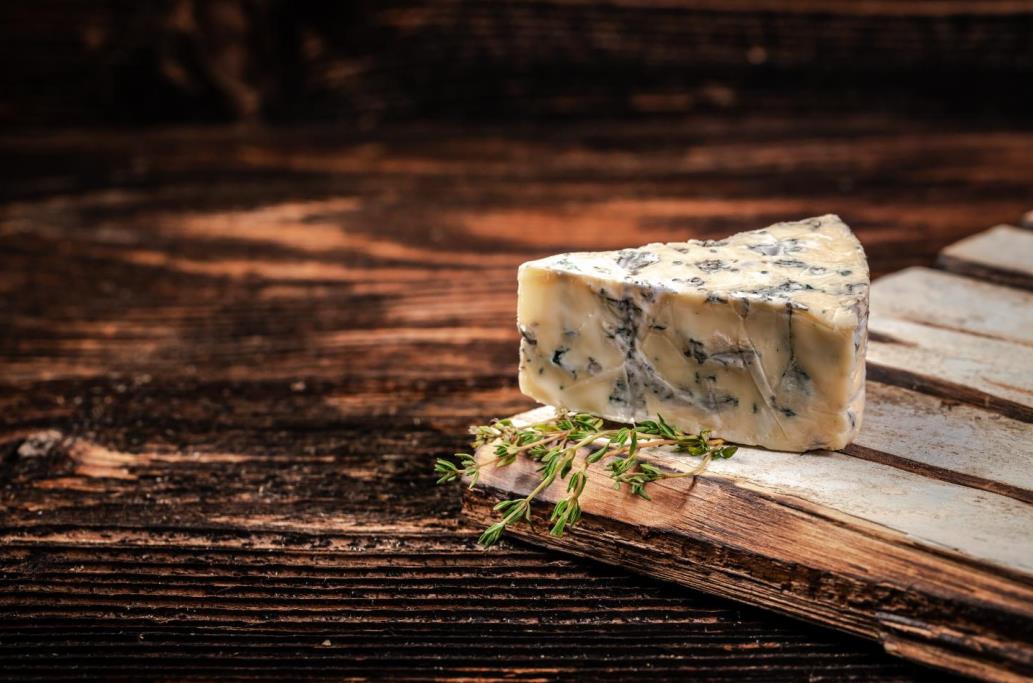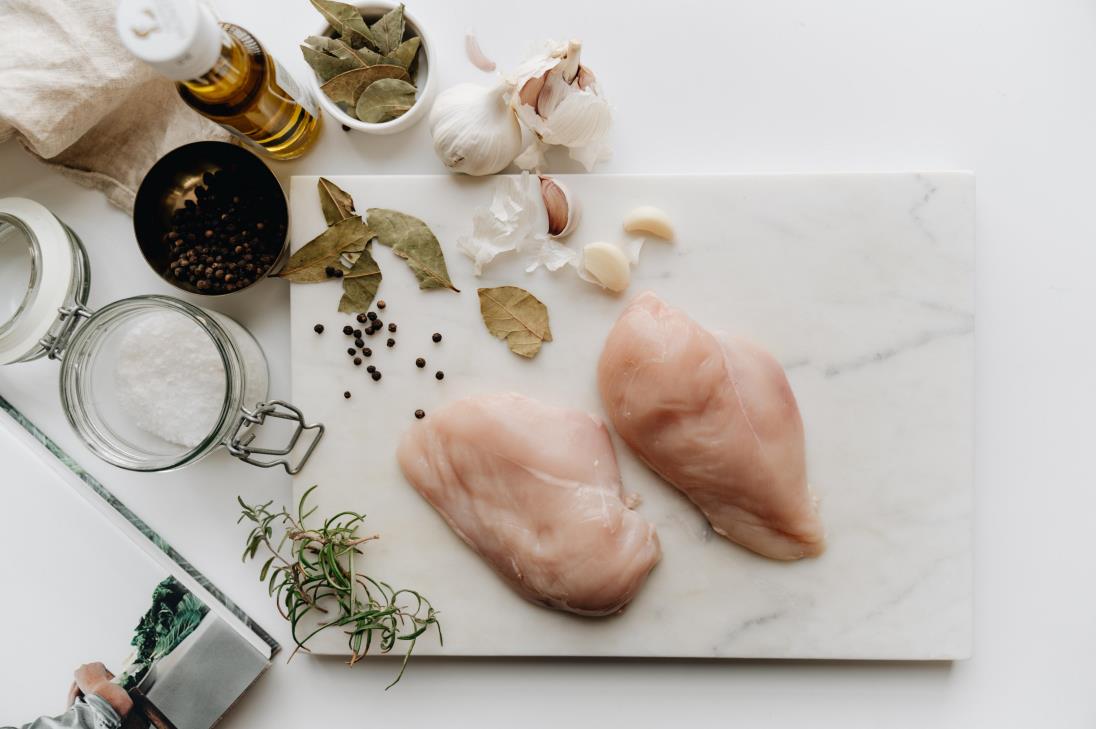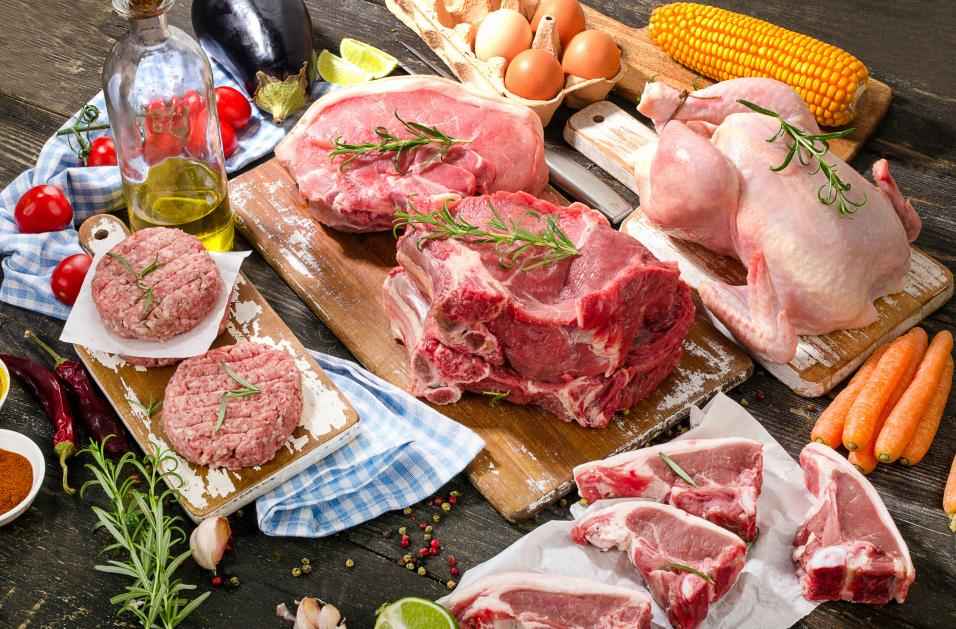The search for the perfect cutting board doesn’t stop at finding one that’s of the right size or shape. While the two are important, choosing the best material is the core of every cutting board decision. Bamboo and wood are two of the most common materials with varying features, pros, and cons.
The main difference between bamboo vs. wood cutting board lies in the material’s properties. A bamboo cutting board features compressed plant fibers that make it harder than wood, while a wood cutting board is just that – made of wood (often hardwood). Other properties, like porosity, water resistance, maintenance, durability, and toxicity, are also discerning factors.
As you read on, we’ll explore each cutting board’s features, pros, and cons in more detail. We’ll also compare the properties of each material to help you make the best decision for your needs.
Table of contents
Bamboo cutting board
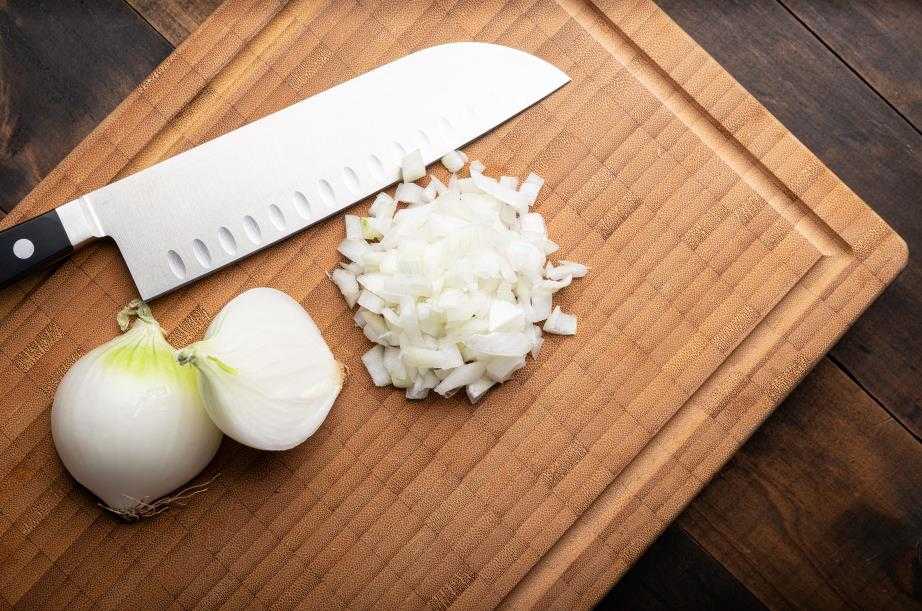
Bamboo is a grass and part of the Poaceae family, including other well-known grasses like wheat. It grows in tropical and subtropical regions worldwide, including Asia, Africa, and Latin America. One of the many uses of bamboo is to create cutting boards (as well as other homeware items like bowls and utensils).
Making bamboo cutting boards involves cutting the grass into thin strips and gluing them together with a strong adhesive. Manufacturers often use cross-laminated bamboo, meaning the strips are glued together in a criss-cross pattern. This design makes for a stronger and more durable cutting board. Sanding down the board leaves a smooth surface for chopping.
Main features of bamboo cutting board
- Bamboo is a composite material of tightly bound lignin and cellulose fibers that give it its characteristic hardness
- Bamboo is sustainable and eco-friendly
- Bamboo is naturally anti-microbial and water-resistant.
- The boards are light and easy to carry
Pros
- The material is harder than wood, making it more durable and less likely to show knife marks.
- Bamboo is a sustainable, eco-friendly material that’s also biodegradable
- The natural antibacterial properties of bamboo make it easier to clean and less likely to harbor bacteria
- Bamboo is less likely to warp or crack than wood
- Bamboo cutting boards are cheaper because bamboo is more readily available than some types of wood
- Bamboo is less likely to scar
Cons
- Bamboo is not as heat-resistant as other materials and can start to warp or crack at high temperatures
- Some adhesives like formaldehyde used to make bamboo cutting boards can be toxic
- The boards dull knives faster because of the hardness
- Bamboo, like other cutting boards, is not dishwasher safe
Are bamboo cutting boards sanitary?
Bamboo is a naturally antimicrobial material, so bamboo cutting boards are less likely to harbor bacteria than other types of cutting boards. The boards absorb less moisture and resist scarring, making them less likely to harbor bacteria in cracks and crevices. However, bamboo cutting board care is still necessary to keep them clean and sanitary.
It’s essential to wash bamboo cutting boards with warm, soapy water after each use. You can also disinfect the boards with a solution of 1 tablespoon of bleach per gallon of water. Rinse the board well and allow it to air-dry completely before storing. Oiling with food-grade mineral oil can also help protect the board from staining and warping.
Wood cutting board
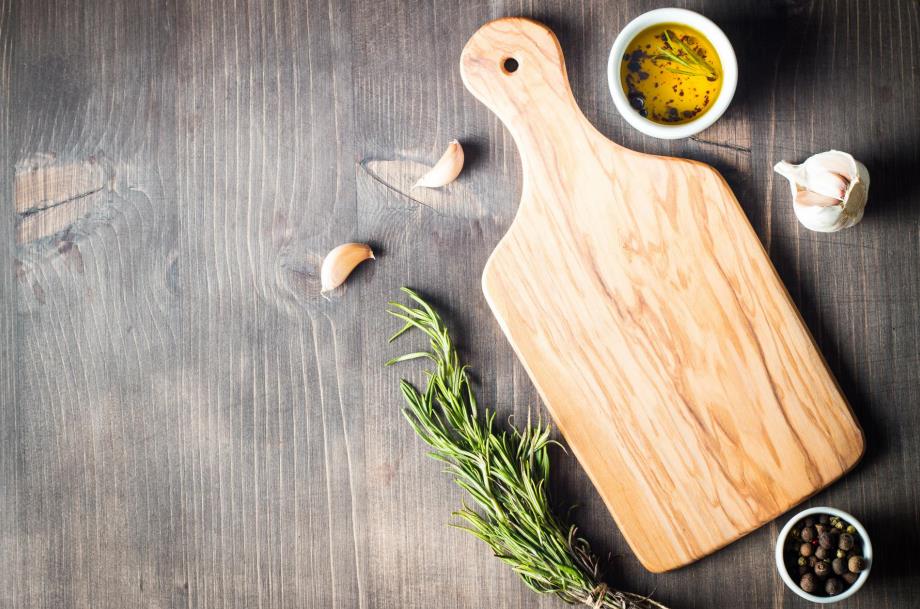
We can’t chronologically place the first appearance of a wood cutting board, but we know that early civilizations used tree trunks and large pieces of wood as chopping blocks. Planks of wood were also common in medieval kitchens. Wood is still a popular material for making cutting boards today because its versatile, durable, relatively inexpensive, and easy to find.
Wood cutting boards come in many types, including hardwoods like maple, cherry, oak, and walnut and softwoods like pine and cedar. The wood you choose will affect the board’s properties, including hardness, density, porosity, water resistance, and toxicity. Therefore, when comparing bamboo vs. wood cutting boards, it’s essential to consider the specific type of wood.
Wood can also be end grain, edge grain, or face grain. The difference between these types of boards is in the orientation of the wood grain, which also affects the board’s properties. For instance, end-grain boards are more resistant to knives because the grain runs vertically, so the knife edge hits the fibers instead of slicing through them.
Main features of wood cutting board
- Wood is a natural material that’s renewable and biodegradable
- Wooden cutting boards are porous, meaning they can absorb water and stains
- Wooden cutting boards come from different types of wood, each with varied properties
- The boards can be end grain, edge grain, or flat grain
Pros
- Wooden cutting boards are knife friendly because the wood fibers act as a natural buffer
- You can find wood boards in many different sizes, shapes, and thicknesses to suit your needs
- Wood cutting boards are easy to find and relatively inexpensive
- Wood have natural anti-microbial properties that makes them more sanitary than other options
Cons
- Wood is a porous material that can absorb water and stains
- Wood requires more maintenance than other types of cutting boards
- Some hardwood can dull knives fast
- Wood is not as heat-resistant as other materials and can warp or crack at high temperatures
Bamboo vs. wood cutting board
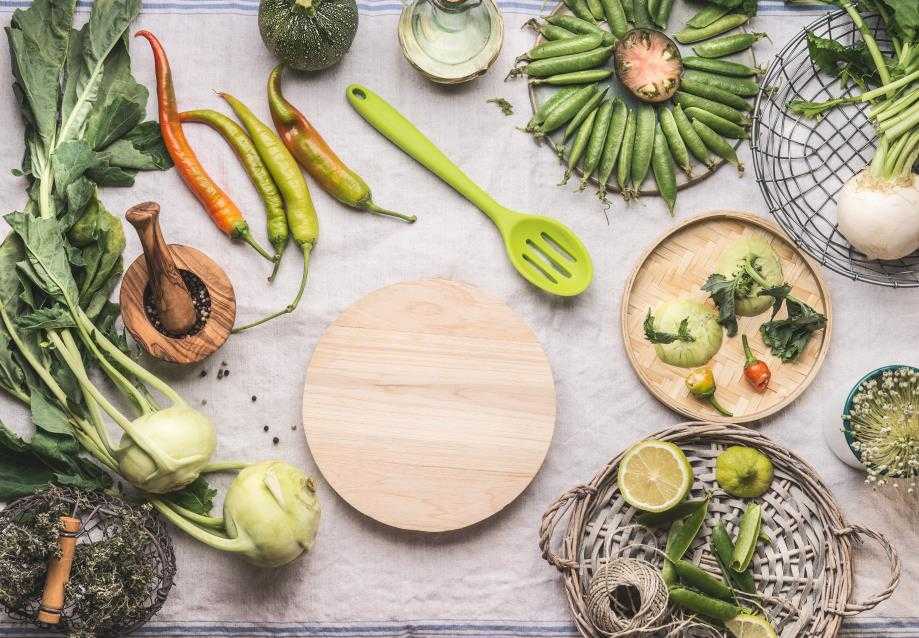
Both bamboo and wood are popular materials for making cutting boards. However, they have different characteristics or properties that make them better suited for different purposes. We can classify these characteristics into porosity, durability, maintenance, water resistance, and toxicity.
Below is a detailed comparison of bamboo vs. wood cutting boards in each category:
Ability to resist water
Water resistance is essential when choosing a cutting board. This property determines how well the board can resist moisture, staining, and swelling. Both bamboo and wood are porous materials, meaning they can absorb water. However, bamboo is less absorbent than wood, making it more water-resistant.
Maintenance
Maintenance involves taking care of the cutting board to prolong its lifespan and keep it in good condition. Both wood and bamboo require some level of maintenance. Both materials are porous and can absorb water, stains, and odors. And both types of boards need to be cleaned and sanitized regularly to prevent the growth of bacteria.
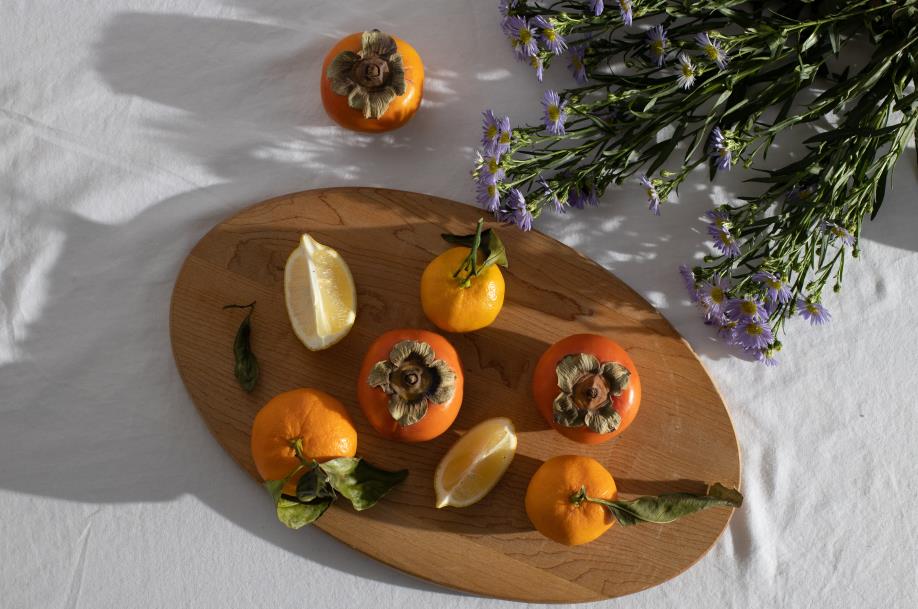
However, wooden cutting boards require more maintenance than bamboo boards. The reason for this is that wooden boards are more susceptible to damage from water and knives. The constant exposure to moisture and knife blades can cause the wood to crack, warp, or split over time.
While bamboo is less absorbent than wood, the damage from water is more disastrous than for wood.
Durability
We can argue that durability is relative because it depends on how you use and care for your cutting board. However, we can still compare the durability of wood and bamboo boards by looking at how they react to different elements, such as water, heat, and knives. Bamboo isn’t as heat resistant as wood, so it’s more likely to warp or crack if you expose it to high temperatures. However, bamboo is more resistant to water and scarring.
Bamboo vs. wood cutting board (Comparison Table)
The following comparison table illustrates the differences between bamboo and wood cutting boards.
| Property | Bamboo | Wood cutting board |
| Ability to resist water | Less porous, so it’s less absorbent to moisture | Wood has more pores which make it more absorbent to moisture |
| Maintenance | Maintenance isn’t as demanding | Requires regular maintenance like oiling and sanding |
| Durability | Less durable because it’s less resistant to heat. Although, it doesn’t absorb water faster. The effects are adverse. It’s prone to warping and cracking. | Hardwood is more durable because it more resistance to heat and water damage is less adverse |
| Hardness | Bamboo is harder, less knife friendly | Most wood types are more gentle on knives |
Other cutting board materials
The best material for cutting boards is not limited to wood and bamboo. There are other materials you can use for your cutting board, such as plastic, glass, or composite (e.g., rubberwood).
Plastic
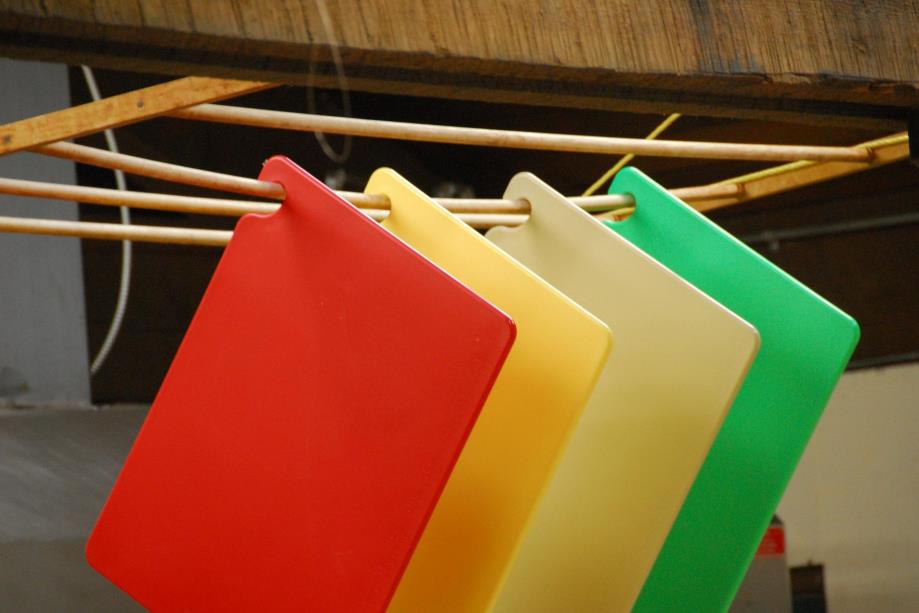
If we compare wood vs. plastic cutting board, wood stands out as the clear winner. While plastic boards are less expensive and require less maintenance, they’re not as durable or eco-friendly as wood boards. Plastic boards are also not easy on knives and lack the aesthetic appeal of wood boards. The same goes for bamboo vs. plastic cutting board comparison. Bamboo is the better option.
Glass
Glass material is not a good option for cutting boards because it’s not knife-friendly. Also, glass is prone to shattering, which makes it a dangerous material to use in the kitchen. For these reasons, we recommend avoiding glass cutting boards. However, if you’re looking for a glass board, ensure it’s tempered. Tempered glass is less likely to shatter.
Composite
Composite boards feature two or more materials bonded together. For instance, rubberwood is a composite board made from recycled rubber and wood fibers. Other examples of composite boards include plastic/wood boards and bamboo/plastic boards. Composite cutting boards are usually more durable than single-material boards. However, they’re not as eco-friendly because they often contain synthetic materials.
Which cutting board is the best for you?
Most chefs recommend wood cutting boards because they’re durable and easy on knives. Wooden boards are also aesthetically appealing and add a touch of elegance to any kitchen. However, bamboo boards are a great alternative if you’re looking for a durable and eco-friendly board. Just keep in mind that bamboo is harder than wood and not as knife-friendly.
When choosing a cutting board, avoid plastic and glass boards. Plastic boards are less durable than wood and bamboo boards. They’re also not eco-friendly. Glass boards are dangerous because they’re prone to shattering. Composite boards are an excellent alternative to wooden and bamboo boards. However, they’re not as eco-friendly as wood or bamboo boards.
Handpicked for you
True cutting power in the palm of your hand
Wrapping up
The bottom line is that wood is the best material for cutting boards. Wood boards are durable, eco-friendly, and easy on knives. However, bamboo is also an excellent alternative if you want a durable and eco-friendly option. You can also invest in both boards if you want the best of both worlds.
More comparisons and information about cutting boards are available on our HDMD knives blog. You can also check out our HDMD store for high-quality handmade knives that will change your cooking experience.








